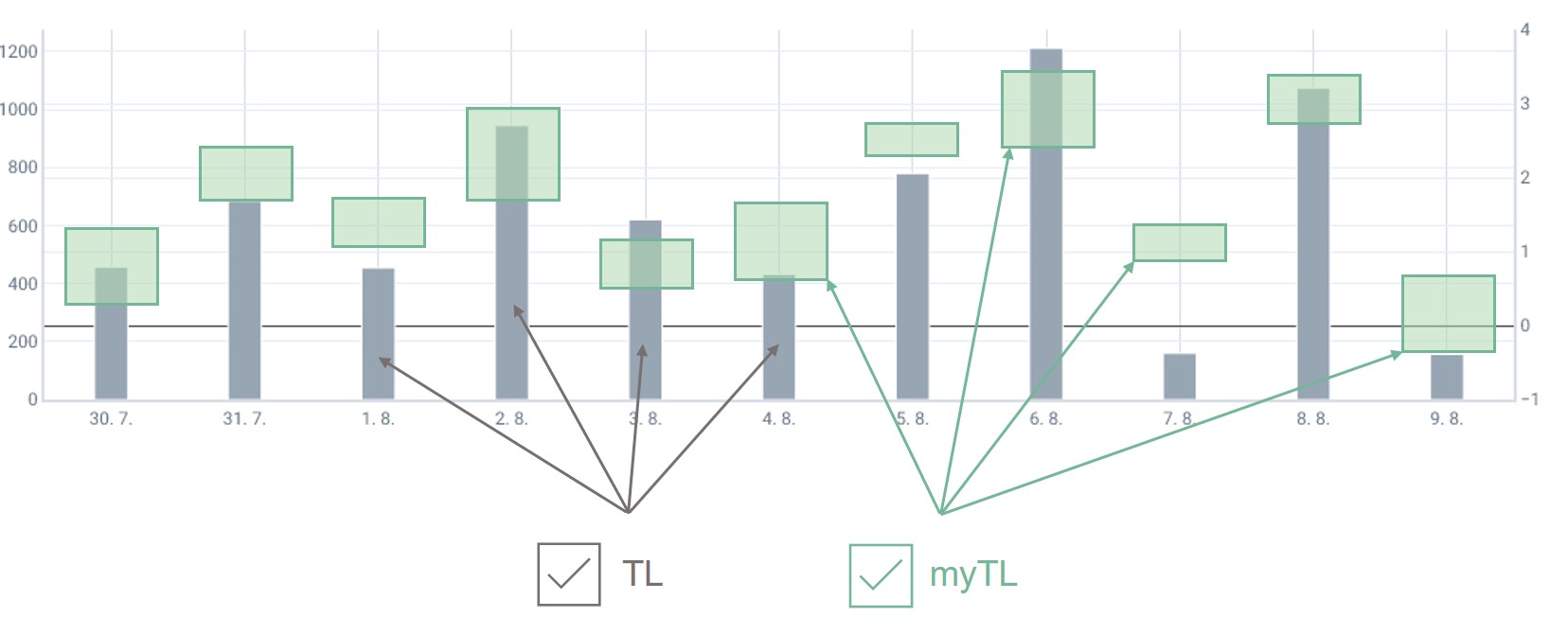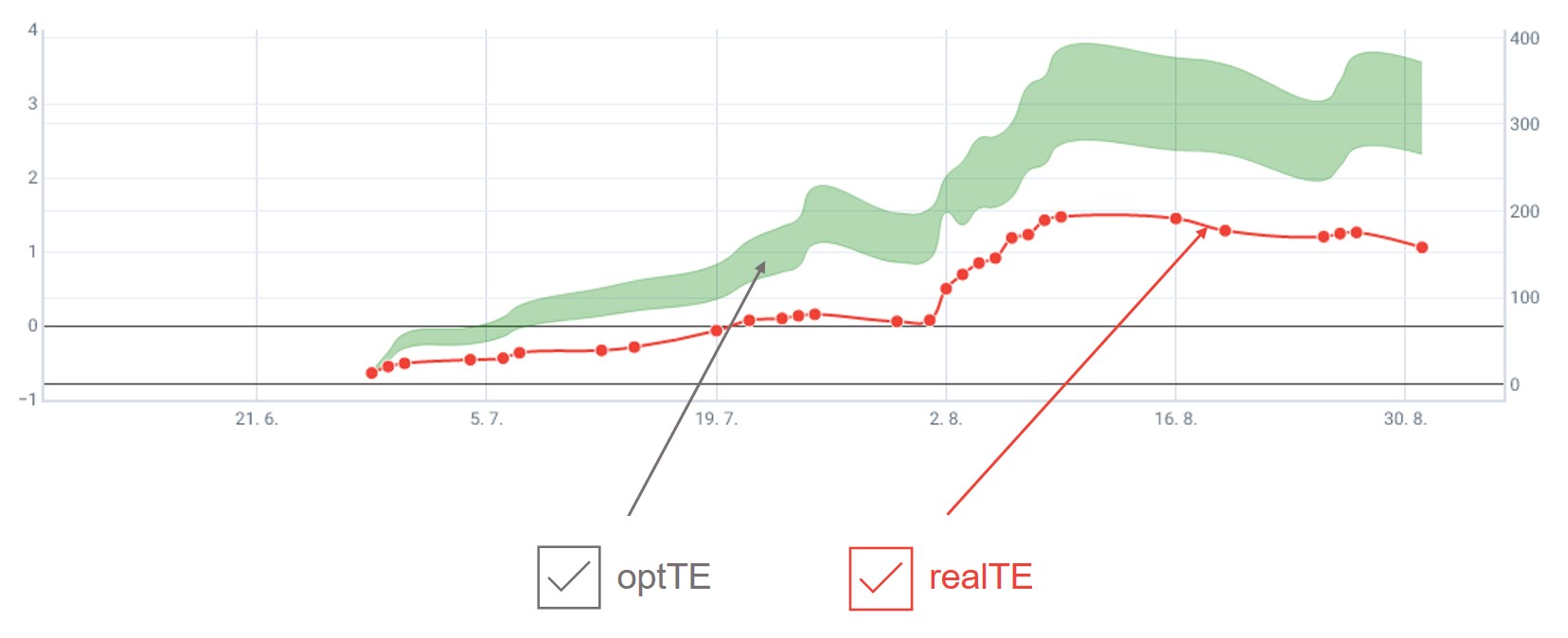myUPGRADE Part 2
In this part we will introduce another part of myUPGRADE, namely a completely new module myTraining.
The basic goal of the new module is to connect information about the state of the organism with information about the implemented training. It will not only record the past but thanks to a complex algorithmic connection it will truly describe the real training effect and recommend optimal training. With responsible monitoring and fulfillment of the system with data, you will get information about the real effect of previous training as well as an individualized prescription for subsequent recommended activities.
Note - the information is based on your recorded training load and its combination with individual information about the state of the organism (HRV).
How does it all work?
In the first stage, it will be necessary to "feed" the system data. For initial operation, it is necessary to record a minimum of 10 mySASY measurements and information about the corresponding training load (10 workouts). At this stage, the system identifies, based on the data entered, what your usual training doses are, both in individual trainings and over a longer period of time, and what the corresponding values of the individual parameters monitored by mySASY are. You will receive the first information in this section after 10 measurements. As with all systems that use cumulated data - the more data, the more accurate the results. With the fact that the limit is not set :).
When is the best time to start?
It follows from the above that there is no "best" time to start = it is possible to start at any time, but it is important to persevere and fill the system with data as long as possible so that it can work as accurately as possible. The more data the system has, the more situations have been recorded, the better it is able to respond to the current situation, the more accurate the recommendation it will make.
How do we get individual training data?
We are preparing several options for you to choose from in the settings:
1. The mySASY option, which uses the Training load (TL) parameter. It combines reasonable informative value proven by scientific evidence *** with user-friendliness and simplicity. TL is the result of the entered information about the "subjectively evaluated load intensity (RPE)" EXACTLY ACCORDING TO THE AVAILABLE SCALE (!!!) and about the time of the training. Thanks to the information entered in this option, we are able to recommend, in addition to the total load (myTL), also its optimal duration and intensity.
2. The entry of parameters from "most used applications". From them, we chose: TSS (units used by the Training Peaks) and RE (Relative Effort - units used by Strava). Due to the fact that the design of these units uses the "unique know-how" of mention systems providers to derive/calculate them from the input data, which consists of information on the intensity and time of activity, mySASY is able to recommend "only" a given aggregate value (TSS, RE for a training). Its distribution to the appropriate intensity and duration is up to each user who has chosen this option.
3. Online data synchronization with a "third party" application. In the first phase, it will be possible to synchronize data with the Strava application. The choice had 2 reasons: 1. The application is the most used in its category, 2. Allows downloading (and forwarding data to mySASY) training data from all commonly used monitors and devices. In the case of using a paid Strava account, the information is downloaded in the exact "Relative Efforts" units. In the case of a Free Strava account, information about the activity and the total time is downloaded. The RPE can be entered by the user either directly in the Strava application or in the mySASY system. We are currently negotiating also with other selected applications.
In the myTraining section you will get information from two closely connected areas:
1. Recommended and real training load (myTL, TL)

myTL (mySASY Training load) – under this parameter you will find range (by mySASY) of recommended training load corresponding to the current and long-term state of your body. The units in which you get the load prescription correspond to the units that you enter into the system.
The prescription is based on the use of all information about the user and his training, which the mySASY system has obtained so far. The recommended training load range is based on the entered data and is compared with the corresponding HRV data. The key is the algorithm that ensures the progression of the training load = the extent to which the client is guided to improve the condition. Its size is fundamentally influenced by information from the Training Profile, which clearly defines the long-term capacity to withstand load and stress. In general, more resilient and talented individuals are automatically recommended higher progression than those in significantly worse condition. All parameters are continuously dynamically monitored and adjusted. Therefore, if the condition improves (due to training), the Training Profile is adjusted, and the recommended load increases. The same is true the other way around. This system of multiple feedbacks, taking into account both the current state of the organism and its long-term development, will ensure safe and long-term progress.
TL (Training Load) - your following training load will be displayed as a bar in the graph. You will know at first sight whether the realized load coincides or differs from the recommended one, possibly how much. This will fundamentally affect the final Training Effect.
2. Optimal and real Training Effect (optTE, realTE)

optTE – shows the range of the optimal effect of training, which the user can achieve with his dispositions and values of measurement and training while following the recommended procedure.
realTE – shows the real Training Effect. The values are specific to each individual. They correspond to the combination of his current and long-term disposition and training. The trend of development of value(s) shows the complex effect of the training.
Unlike approaches that use for presentation of the "Training Effect" simply cumulative loading of realized training over a period of time - "chronic load / Fitness" (usually 30 days) / acute load / Fatigue (usually 7 days) used by many other tools, mySASY combines in its TE information about the real training load with information about the current and long-term state of the organism and their development. Adherence to the current recommendation is considered optimal. For a user who likes to experiment and is prepared to take a risk, it should apply (and the evaluation of TE - Training Effect takes this into account) that with "good body condition" the resulting Training Effect is higher than the effect evaluated only on the basis of the magnitude of the training load. If users accept the increased risk, they can exceed the planned load in this situation. Conversely, in a situation where the condition of the organism is deteriorated, a higher than recommended activity has a counterproductive effect and may shift the resulting Training Effect in a fundamentally undesirable direction.
We hope you will enjoy this module and that it helps you to train smarter. Thank you for your support and the opportunity to take mySASY to the next level.
***A New Approach to Monitoring Exercise Training C Foster 1, J A Florhaug, J Franklin, L Gottschall, L A Hrovatin, S Parker, P Doleshal, C Dodge, J Strength Cond Res. 2001 Feb;15(1):109-15.

